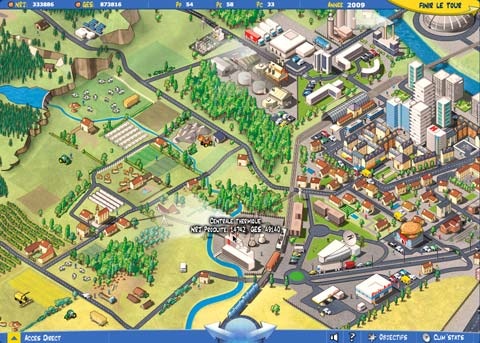
William Ruddiman’s book Plows, Plagues, and Petroleum: How Humans Took Control of Climate has attracted a good deal of interest in the climate history world since it was published in 2005.
His major thesis is that even before the industrial revolution, human activity over a period of 8000 years was responsible for a significant rise in carbon dioxide and methane levels in the atmosphere. After explaining orbital changes and their effect on ice-age cycles and monsoon cycles he turns to what he considers an anomalous rise in methane concentration in the atmosphere which began 5000 years ago – anomalous in that the naturally declining solar radiation would be expected to result in gradually lowering methane levels as wetlands diminished in size. He patiently works his way through what can be inferred of early agriculture to a hypothesis that increasing rice irrigation was mainly responsible for the methane increase, with lesser contributions also from domestic grazing animals and biomass burning. His next step is to look at CO2 changes, where he detects a similar anomaly beginning 8000 years ago when the natural downward trend was interrupted at around 260 parts per million to rise to around 280 ppm by the start of the industrial revolution. In the case of CO2 he attributes the rise to deforestation for agriculture, aided perhaps by some peat and coal burning. This attribution is tested against the population levels and likely amount of deforestation resulting from agricultural activities; he explains the calculations which he undertook to establish its credibility.
If he is correct this would mean that the warm and stable climate of the last 8000 years has been due to unwitting human intervention which offset a natural cooling that would otherwise have gradually developed. He sets out reasons for the conclusion that a degree of glaciation may by now have been occurring in Canada were it not for human farming activities.
His hypothesis has been challenged, as he expects and, as a scientist, welcomes. He responds in his book to two of the challenges, both of which he acknowledges to have merit. One is that he did not go far enough back in the sequence of ice-age cycles when looking at the pattern of previous interglaciation periods for a comparison of what might be expected from natural processes today. The other is that humans could not possibly have cleared and burned enough forest to account for such a large CO2 anomaly. He considers that with some adjustment his hypothesis survives these challenges.
He then considers the “wiggles” that have occurred in the CO2 increases over the 2000 years prior to the industrial revolution, particularly the so-called Little Ice Age, when the CO2 level dropped somewhat. He doubts natural causes and looks instead for processes that might have reversed the slow deforestation which he has suggested responsible for the gradual CO2 increase. He rules out war and famine as not disastrous enough on a large enough scale and settles on disease, especially the plague. He theorises that as epidemics and pandemics caused major drops in population, reforestation occurred in abandoned farmland, there was a slowdown in new deforestation, and in China a decrease in the amount of coal burning.
The question Ruddiman then proceeds to address is why the relatively modest rise in greenhouse gases caused by humans before the Industrial Revolution led to so relatively large an increase in temperature – 0.8 degrees – while the relatively large rise in greenhouse gases since the Industrial Revolution has been accompanied by a still relatively small increase in temperature. His answer lies in the response time required for the full effects to be felt and he explores this in some detail in relation to both land and ocean, showing how response times vary in different environments.
Ruddiman’s hypotheses continue to be debated by climate scientists. In fact Wallace Broecker, one of the world’s leading experts on climate history describes them as “total and utter nonsense”, according to a September 2008 New Scientist article. The article reports Broecker reckoning there’s a natural explanation for the CO2 rise. Deep-sea sediments record a drop in carbonate concentrations that could account for the rise in atmospheric CO2. But others find Ruddiman at least worthy of further consideration. His book is certainly a fascinating detective science story, readily accessible to a general reader.
But I enter a caveat in relation to his closing chapters where he looks at future warming prospects as the full effect of the large post-industrial revolution rise in greenhouse gases begins to be felt. His prognostications are more optimistic than many climatologists would be willing to offer today. He gives us a century or two to melt much of the world’s sea ice and mountain glaciers and push back the seasonal limits of snow cover, but considers the two great ice sheets will be largely intact. The book was published over three years ago. One wonders whether he would be as sanguine now.
When he wrote the book he was certainly disinclined to see climate change as an overwhelming challenge. In fact he is quite testy about what he describes as the alarmism of extreme environmentalists and their organisations. He doesn’t name them, but he accuses them of oversimplifying the complexities of the global warming issue. He should have identified the organisations he refers to. Maybe he has noticed more alarmist predictions than I have. Major environmental advocacy groups such as Greenpeace and WWF seem to me to stay well within the bounds of responsible science on climate change.
He finally states that the depletion of precious resources – naming water, topsoil and fossil fuel – poses a greater threat to the human future than the threat of global warming does. There are certainly many serious threats to the continuance of human society, but he provided me with no grounds for relegating global warming to a secondary rank.
Like this:
Like Loading...


 “Forget global warming. The cold, hard facts point to another threat on the horizon – severe cooling.” That’s the strapline over an opinion piece in yesterday’s Dominion Post business section (
“Forget global warming. The cold, hard facts point to another threat on the horizon – severe cooling.” That’s the strapline over an opinion piece in yesterday’s Dominion Post business section ( Forty leading Australian scientists have issued
Forty leading Australian scientists have issued